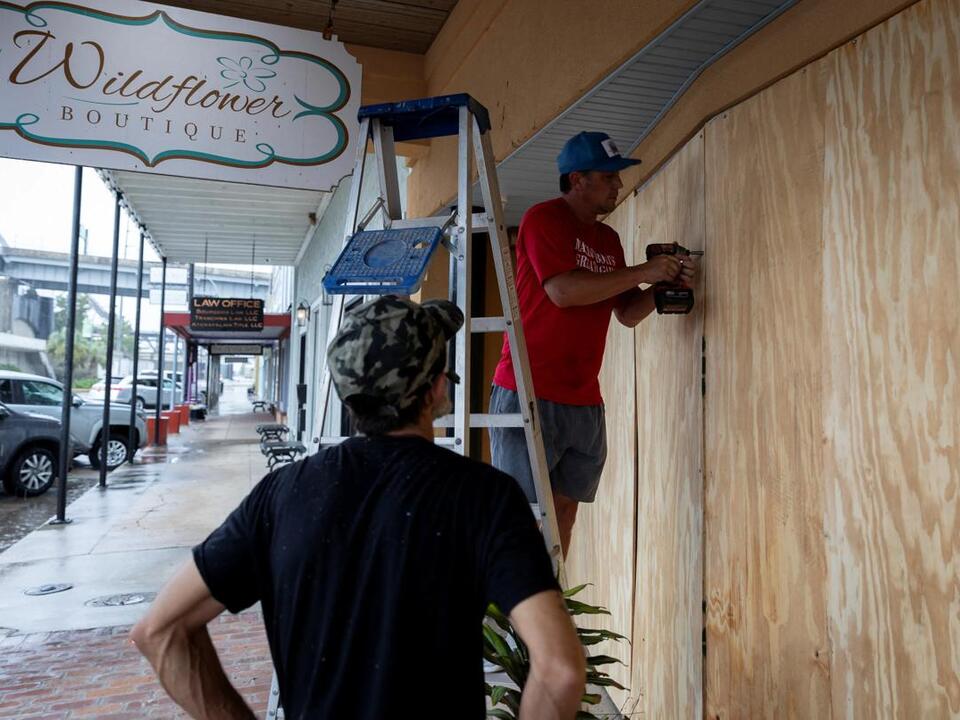Physical Address
304 North Cardinal St.
Dorchester Center, MA 02124
Physical Address
304 North Cardinal St.
Dorchester Center, MA 02124

Residents of Louisiana prepared for the impact of Hurricane Francine, which intensified into a dangerous storm on Wednesday. The hurricane, moving across the Gulf Coast, was predicted to bring significant rainfall—up to a foot in some regions—along with damaging winds and a storm surge that could reach as much as 10 feet in certain areas.
As of early Wednesday, sustained winds from Francine had increased to 90 mph. The storm was on track to make landfall on the central Louisiana coast later that afternoon or evening. The National Hurricane Center issued warnings about “life-threatening storm surge and hurricane-force winds,” urging residents to take immediate precautions.
Louisiana Governor Jeff Landry reported that the National Guard had been activated and that nearly 400 high-water vehicles, 87 boats, and 50 helicopters were prepared for rescue and recovery operations. He emphasized the importance of following local officials’ advice, especially regarding evacuations.
In a more positive update, the hurricane center indicated that Francine was unlikely to strengthen further before reaching land and would likely weaken quickly after landfall. The storm was expected to move into Mississippi and eventually weaken into a tropical depression, reaching as far north as Memphis by Thursday night.
The center of Francine was located about 150 miles southwest of Morgan City, Louisiana, on Wednesday morning, moving northeast at 13 mph. Hurricane-force winds extended outward up to 40 miles from the center, while tropical storm-force winds reached 115 miles.
Late on Tuesday, President Joe Biden approved an emergency declaration for Louisiana, responding to a request from state officials. This declaration will aid in disaster relief and response efforts.
In Texas, Governor Greg Abbott also warned residents about the severe storm surge expected along the Gulf Coast, urging them to heed local authorities’ directives, including potential evacuation measures.
In Morgan City, a community in the path of the storm, police instituted a curfew from 11 a.m. Wednesday to 6 a.m. Thursday. Residents were advised to shelter in place. Trenton Ho, a local cashier, expressed a sense of calm despite the impending storm, stating that he had experienced similar situations before. He prepared for the hurricane by freezing water to keep it cold in case of a power outage.
Forecasts suggested that significant strengthening of Francine could occur on Wednesday morning, with some models indicating that it might near or reach Category 2 status. However, expected increases in wind shear and dry air intrusions meant that further strengthening prior to landfall was not anticipated. Regardless, the storm was still projected to present significant risks as it made landfall.
The National Weather Service in New Orleans projected that the storm’s adverse effects could persist into Thursday morning, with potential for coastal flooding, high winds, heavy rain, and even tornadoes. Areas along and west of the Pearl River were warned to prepare for damaging winds, while communities along the bayou and lower river areas should brace for hurricane-force winds. Widespread issues such as power outages and damage to trees and properties were also anticipated.
A hurricane warning was put in place from the Texas-Louisiana state line to Grand Isle, Louisiana. Tropical storm warnings extended along the Louisiana coastline from Grand Isle through Lake Pontchartrain, as well as across southern Mississippi and Alabama.
Hurricane Francine could cause total rainfall ranging from 4 to 8 inches, with localized areas in southeastern Louisiana, Mississippi, southern Alabama, and the Florida Panhandle possibly receiving up to 12 inches through Thursday night. This rainfall was likely to result in significant flash flooding and urban flooding issues.
Mandatory and voluntary evacuations were ordered in various Louisiana parishes, including Terrebonne and Lafourche, where shelters had been opened. Lafourche Parish mandated evacuations for residents in FEMA-provided housing or state-issued RV campers.
The hurricane led to oil and gas companies in the Gulf of Mexico shutting down production. Over 400,000 barrels of oil production per day were halted, which is around 24% of the region’s output. Natural gas production also saw significant reductions, with approximately 26% being offline at the time.
Exxon Mobil Corp’s Baton Rouge refinery anticipated cutting its production to as low as 20% of its capacity as the storm approached, revealing the extent of the storm’s potential impact on energy infrastructure.
Governor Landry, who had previously declared a state of emergency, advised residents to have a plan and stay informed through local news to mitigate the storm’s effects. Some areas were forecasted to face a storm surge of 5 to 10 feet, creating widespread flooding and heavy rain accumulation.
Schools were closed, and efforts were underway to distribute sandbags ahead of the storm’s arrival. Francine was poised to become the third hurricane to make landfall along the Gulf Coast this year, following Hurricanes Debby and Beryl.
This year, Francine is the fourth hurricane of the Atlantic season, with the average date for the fourth hurricane typically falling around September 16. Forecasters are also monitoring four additional disturbances across the Atlantic, signaling an active hurricane season.
As the storm neared Louisiana, officials and residents alike braced for what could be a challenging period of weather, with all eyes on the unfolding situation.
Source: USA Today



